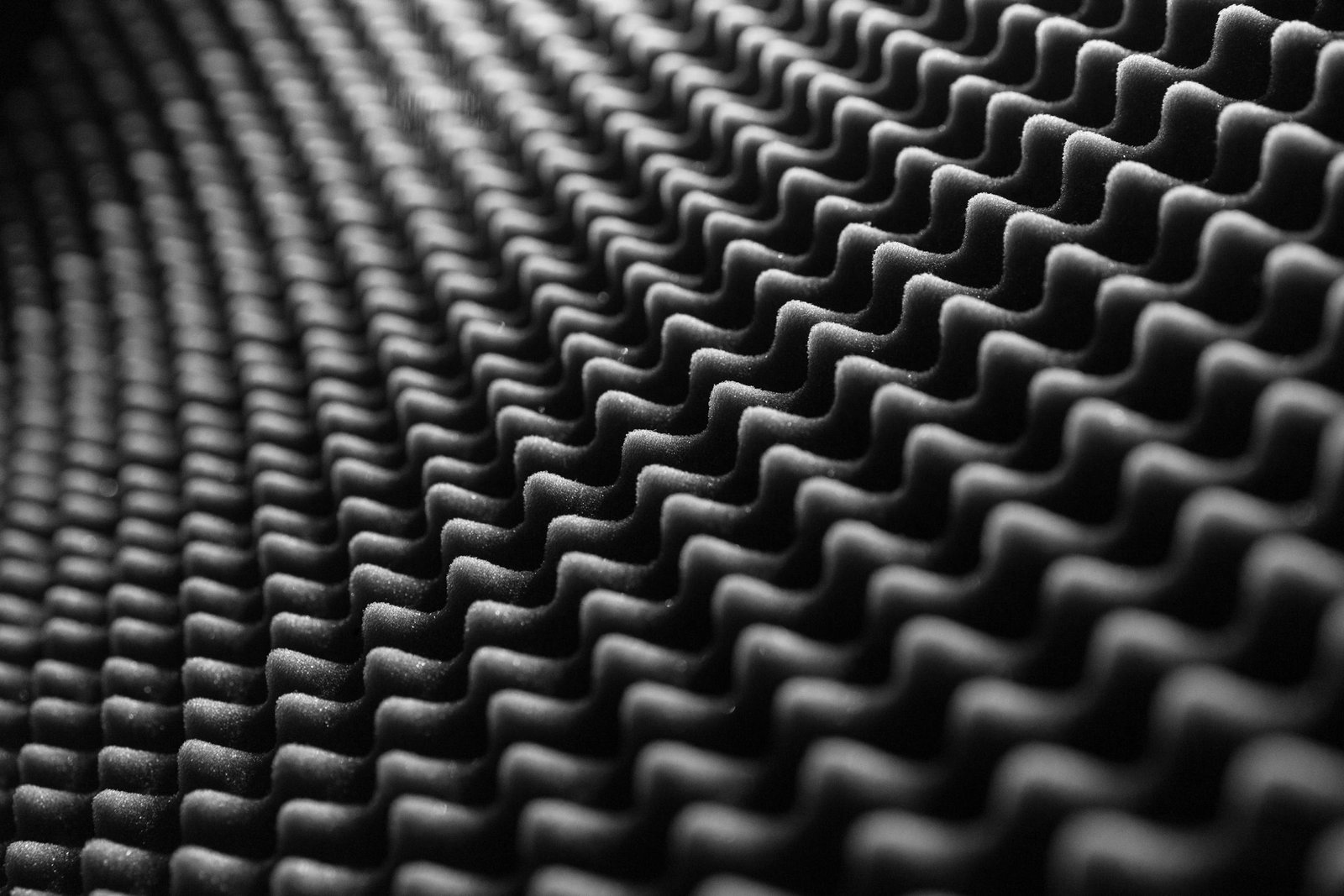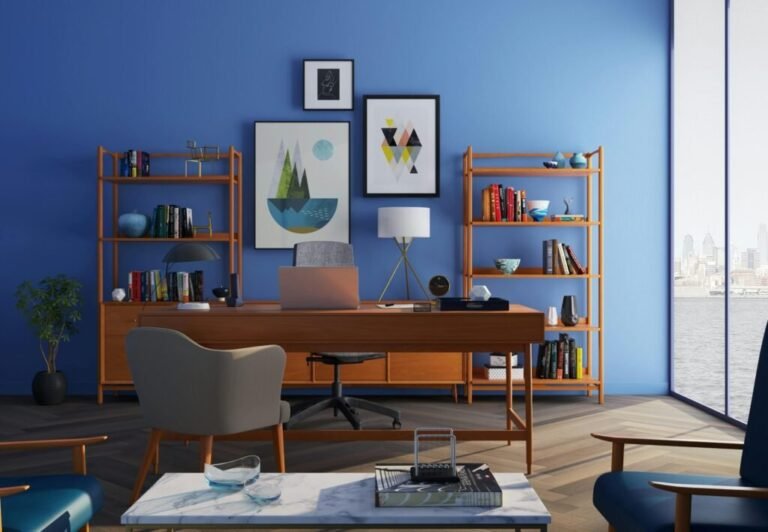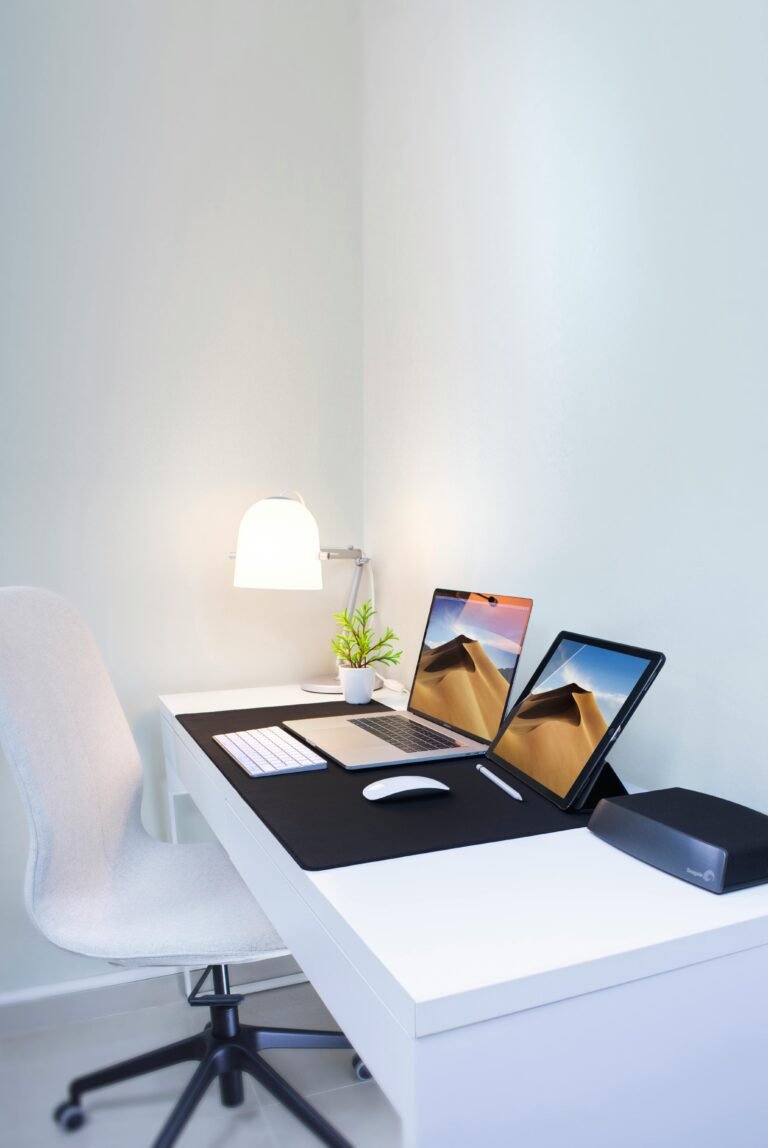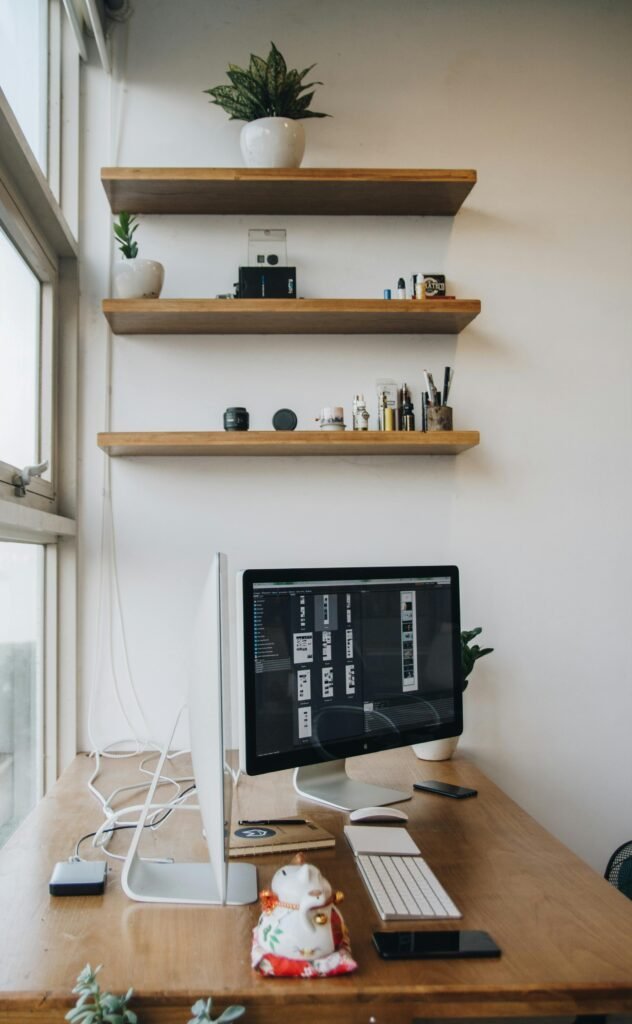
Soundproofing is a vital aspect of creating an ideal home office environment, particularly in a world that increasingly relies on remote work. The significance of maintaining a quiet workspace cannot be overstated, as external noise can significantly disrupt concentration, hinder productivity, and adversely affect an individual’s mental well-being. In an era where distractions abound, the need for effective home office soundproofing solutions has become a pressing concern for many professionals.
The impact of noise on work performance is profound. Studies have indicated that consistent exposure to distracting sounds can lead to a decrease in focus, an increase in stress levels, and a heightened sense of fatigue. As a result, implementing soundproofing measures can provide a much-needed sanctuary where individuals can immerse themselves in their tasks without interruption. This multifaceted approach not only fosters productivity but also promotes a healthier work-life balance.
Sound isolation techniques vary in effectiveness and application, ranging from structural modifications to the incorporation of specialized materials designed to absorb and block sound. For instance, utilizing acoustic panels, double-glazed windows, or even investing in soundproof doors can drastically reduce noise intrusion from outside sources. Furthermore, integrating soft furnishings, such as carpets and curtains, contributes to the overall sound absorption qualities of the space. By prioritizing these home office soundproofing solutions, one can cultivate an atmosphere conducive to creativity and efficiency.
As we delve deeper into this guide, we will explore a range of strategies tailored to enhance sound isolation within your home office. By understanding the principles of soundproofing and its necessity, individuals can make informed decisions to create an optimal working environment that supports their professional goals.
Understanding Sound Transmission
Sound transmission is a fundamental concept that plays a crucial role in the effectiveness of home office soundproofing solutions. Sound waves travel through various mediums, including air, walls, and floors, and can be categorized into two predominant types: airborne noise and impact noise. Airborne noise refers to sounds that travel through the air, such as conversations, music, or traffic, while impact noise is generated by physical actions, such as footsteps or objects being dropped. Understanding these differences is essential for devising effective strategies for soundproofing a home office.
The science behind sound transmission involves the vibration of particles in mediums. When a sound wave hits a surface, a portion of its energy is transmitted through that surface, while another part is reflected back into the room. Various factors influence how sound travels, including the materials from which walls, ceilings, and floors are constructed. Dense materials tend to absorb sound better than lighter ones, which is why incorporating sound-absorbing materials can enhance the effectiveness of soundproofing measures.
Moreover, the layout of an office can significantly impact sound transmission. For instance, open-concept spaces may allow noises from other rooms to seep in more easily, necessitating the use of strategic sound barriers to mitigate disruption. Soundproofing solutions may include the installation of acoustic panels, carpets, or heavy curtains to absorb unwanted noise. It is also essential to consider existing sound barriers such as furniture placement and the arrangement of electrical installations. All these factors contribute to the overall acoustic environment of a home office, emphasizing the importance of a tailored approach to soundproofing in order to create a conducive work atmosphere.
Tools for Measuring Sound Levels
Effective home office soundproofing solutions begin with understanding the existing sound levels within your workspace. Measuring sound accurately can help you identify specific areas that need improvement. There are several tools and techniques available for measuring sound levels, ranging from professional equipment to accessible mobile applications.
One of the most reliable tools for assessing sound levels is a sound level meter. These devices are designed to provide a precise measurement of decibel levels in various environments. Sound level meters can range from basic models to advanced devices that offer features such as data logging and octave band analysis. When using a sound level meter, it is important to follow the manufacturer’s instructions and ensure the meter is calibrated correctly for accurate readings.
For those looking for a less expensive alternative, numerous mobile applications are available that can turn your smartphone into a sound level measuring tool. These apps utilize your device’s microphone to provide approximate noise levels, making them a practical option for quick assessments. However, it is essential to remember that while these apps can be useful for general assessments, they may not offer the same accuracy as dedicated sound level meters.
In addition to using equipment, it is crucial to employ effective sound measurement techniques. When measuring, consider collecting data at various times throughout the day to account for fluctuations in noise levels, such as peak traffic hours or late-night disturbances. Recording multiple measurements in different parts of your home office will provide a comprehensive view of sound distribution. By interpreting these results, you can better identify specific noise issues that may necessitate home office soundproofing solutions.
DIY Soundproofing Solutions
When it comes to creating a peaceful workspace at home, implementing DIY soundproofing solutions can be both effective and budget-friendly. One of the simplest methods is to use weatherstripping. This material can be applied around doors and windows to seal gaps, preventing sound from leaking in and out. To apply weatherstripping, measure the perimeter of the door or window, cut the strips to size, and adhere them securely. This process not only helps with sound isolation but also enhances energy efficiency.
Another practical solution is the installation of door sweeps. These devices attach to the bottom of doors to block sound from entering or exiting the office space. To install a door sweep, choose an appropriate length that aligns with your door, attach it with screws or adhesive tape, and ensure a snug fit against the floor. This small addition can make a significant difference in reducing noise disturbances.
Acoustic panels are also a great option for soundproofing your home office. Panels can be crafted from materials such as foam, fiberglass, or even recycled fabric, which can absorb sound waves effectively. For a DIY approach, you can purchase or make your own panels by wrapping the chosen material around a wooden frame. Mount the panels on walls or ceilings to minimize reverberation and improve sound quality within your workspace. Considering aesthetics, you can customize the fabric covering to match your office decor.
These DIY soundproofing solutions can be tailored to fit various budgets and skill levels. They provide effective ways to diminish distracting noises, allowing for a more focused and productive work environment. By incorporating these strategies, you can significantly enhance the acoustic quality of your home office without extensive renovations or significant costs.
Investment in Professional Soundproofing
When evaluating home office soundproofing solutions, one must consider the potential advantages of investing in professional installations. While DIY methods may achieve some degree of noise reduction, professional services often ensure that the soundproofing is effective and tailored to the specific needs of the space. This can be particularly beneficial for those who work from home and require a distraction-free environment, as noise pollution can significantly impact productivity and focus.
Hiring professionals for soundproofing installations typically encompasses a variety of services. Common offerings include wall treatments, which may consist of soundproof panels or insulation; ceiling installations that address airborne sound transmission; and window upgrades that improve acoustic barriers. These enhancements can greatly decrease the amount of external noise infiltrating the home office, leading to a more serene work environment. Moreover, professionals can assess the unique acoustics of your space and recommend the most effective solutions tailored to individual requirements.
While there is an upfront cost associated with hiring a reputable contractor, this investment can yield significant long-term advantages. Professional soundproofing not only adds value to the property but can also lead to enhanced focus and improved job performance. Moreover, understanding the varying costs associated with different soundproofing solutions can help homeowners make informed decisions. It is crucial to conduct thorough research when selecting a contractor, taking into account their experience, client testimonials, and certifications to ensure that the project is handled by skilled professionals.
Ultimately, investing in professional soundproofing solutions can facilitate a more conducive work environment, ultimately enhancing both productivity and well-being within the home office. By ensuring that the strategies implemented are effective and comprehensive, individuals can maintain their focus and promote a successful work-from-home experience.
Furniture and Layout Considerations
Designing a home office that fosters productivity often encompasses not only technology and lighting but significantly hinges on furniture selection and office layout. Noise levels can be impacted dramatically by both elements, making strategic choices essential for effective home office soundproofing solutions. By carefully considering the arrangement of furniture and incorporating sound-absorbing materials, one can create a workspace that minimizes distractions and enhances focus.
When it comes to furniture selection, choosing sound-absorbing pieces can make a considerable difference. For instance, bookshelves filled with books serve a dual purpose: they provide storage and act as a barrier to sound. In addition, thick carpets or rugs help dampen noise transmission from floors, further contributing to a quieter environment. Consider using curtains or fabric wall hangings as well; these can absorb noise while also adding an element of style to the office.
The layout of the home office is equally important. Positioning desks away from walls that border noisy areas, such as streets or family gathering spots, can help mitigate unwanted sound. Creating a layout that promotes natural sound barriers, such as strategically placing furniture to block noise paths, is a practical approach to minimize disturbances. Finding the right balance between aesthetics and functionality is key; for example, a cozy nook created with a comfortable chair and small bookshelf can provide both a serene workspace and an inviting atmosphere.
Additionally, consider the overall flow of the layout. Ensuring a clear path and organizing the space can lead to fewer interruptions and a more peaceful working experience. By implementing these furniture and layout considerations, individuals can enhance their home office environment, effectively utilizing home office soundproofing solutions to reduce unwanted noise while maintaining a stylish and functional workspace.
Isolating Noise from Technology
In the modern era, technology plays an integral role in enhancing productivity within a home office environment. However, it is essential to acknowledge that these technological devices can also generate considerable noise, which can be disruptive. The continuous hum of computers, the whirring of printers, and the sounds emitted from other office equipment can hinder concentration and affect overall efficiency. Consequently, implementing effective home office soundproofing solutions becomes paramount.
One of the most straightforward strategies to mitigate noise is selecting quieter devices. Many manufacturers now offer low-noise or silent models of essential equipment such as computers, printers, and copiers. Opting for power-efficient models designed to operate with minimal noise can substantially decrease the office’s overall sound levels. Additionally, placing devices on sound-absorbing surfaces or using isolation pads can significantly reduce vibrations and noise emissions.
Furthermore, investing in sound dampening technology can be instrumental in creating a quieter workspace. Noise-canceling headphones, for instance, are an effective solution for blocking out ambient distractions while working. These devices use advanced technology to assess surrounding sounds and produce sound waves that counteract noise, providing a more serene environment for concentration. Additionally, utilizing acoustic panels or soft furnishings can aid in absorbing sound waves, creating an overall quieter space.
Best practices for establishing a tech-friendly, quiet office environment include strategically positioning devices away from workspaces to minimize direct noise exposure. For instance, keeping printers and high-decibel equipment in a separate room can significantly help in controlling sound levels. Furthermore, limiting the use of certain technologies during critical work hours can also support sustained focus. Through these efforts, it is possible to effectively manage noise generated by technology, contributing to a well-optimized home office.
Creating a Peaceful Atmosphere
Creating a peaceful atmosphere in your home office goes beyond merely implementing home office soundproofing solutions. While effectively reducing external noise is critical, the overall ambiance of your workspace has a significant impact on your productivity and mental well-being. Incorporating various elements can transform your office into a serene environment conducive to focus and creativity.
One effective way to enhance your workspace is by introducing plants. The presence of greenery not only improves air quality but also promotes a calming atmosphere. Plants like snake plants, peace lilies, or pothos can add a touch of nature, serving to reduce stress and increase happiness levels. Additionally, the aesthetic appeal of plants makes them not just a visual enhancement but also a functional aspect of home office soundproofing solutions, as they can absorb sound, further contributing to a quieter environment.
Next, consider the color scheme in your home office. Calming colors, such as soft blues, greens, and neutral tones, can create a tranquil atmosphere that fosters concentration. Utilizing these colors on walls, furniture, and decor provides a sense of relaxation that can help mitigate feelings of anxiety or distraction. Moreover, ambient sound machines can also be beneficial to mask unwanted noise. These devices can produce white noise or soft music that helps drown out distractions from outside sources, enhancing your overall work experience.
Implementing an effective routine for maintaining your serene workspace is equally crucial. Regularly decluttering your office and organizing your supplies can help keep the environment peaceful. Incorporating short breaks and moments of mindfulness can also aid in resetting your focus. By harmonizing these elements, you are not only addressing the concerns of noise through soundproofing but also nurturing a supportive atmosphere that ultimately enhances productivity and well-being.
Conclusion and Next Steps
In the ever-evolving landscape of remote work, ensuring a productive environment is paramount. Throughout this guide, we have explored various home office soundproofing solutions designed to mitigate noise interference and enhance focus. From acoustic panels and rugs to soundproof curtains and door seals, each method offers viable options to combat disruptive sounds within your workspace.
As you assess your current home office setup, it is essential to identify specific noise issues that impede your productivity. Consider the type of noise that affects you most—whether it’s external disturbances from nearby traffic or internal sounds from family members and pets. By recognizing these factors, you can implement targeted home office soundproofing solutions tailored to your unique challenges.
We encourage you to take action on the suggestions provided earlier in the article. Start with small adjustments, such as rearranging furniture or incorporating soft furnishings to absorb sound. Gradually, you can explore more substantial changes like upgrading windows or installing more advanced acoustic treatments. Every small effort contributes significantly to the overall effectiveness of your soundproofing approach.
Your experience matters. We invite you to share your thoughts on the solutions that have worked for you or any additional tips you may have discovered in your journey toward a quieter workspace. Engaging with fellow readers can provide a rich source of inspiration and insight. Additionally, feel free to ask questions about specific challenges you face in your home office. Together, we can foster a community focused on achieving serene and efficient work environments.






